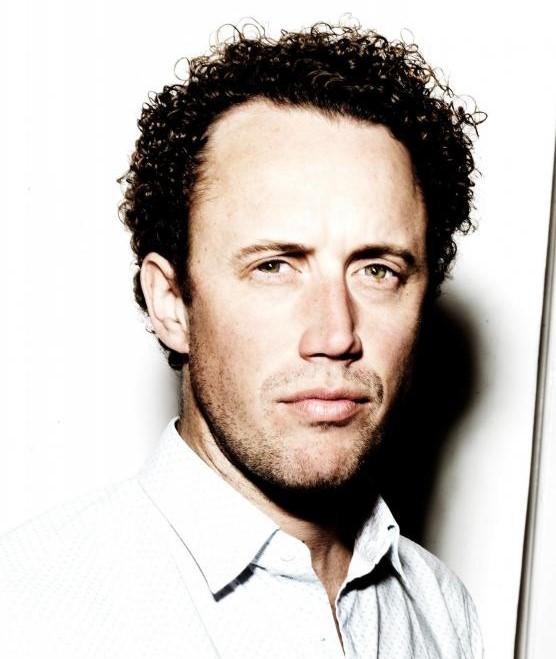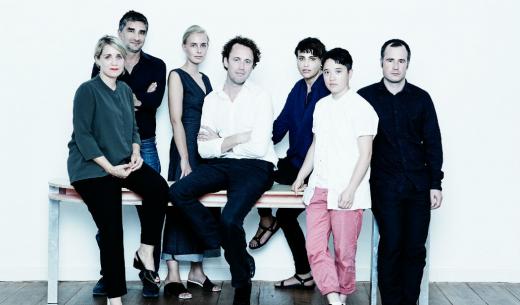Have you met...Krist Gruijthuijsen
Have you met...Krist Gruijthuijsen

KW Institute for Contemporary Art has entered a new era led by the recently appointed Krist Gruijthuijsen. The young Dutch curator acts both as director and chief curator, replacing Gabriele Horn and Ellen Blumenstein respectively. Gruijthuijsen opens his first season this month with works by Ian Wilson and three correlated solo exhibitions by Hanne Lippard, Adam Pendleton, and Paul Elliman. We met him in the refurbished spaces of KW to discuss the changes that have been made, and those that are yet to come.
How would you describe your relationship with KW and your new position here so far?
This can also be a personal question, because KW has always been for me an institution that took and still takes risks. I love this idea of an institution that is ready to fall flat on its face and rise up like a king. It is also interesting how building can become such a prominent landmark in a city that is so heavily developing and changing. I think that it is important to continuously rethink the center's necessity and its urgency to actually be there. Especially in Berlin, with its enormous saturation of possibilities. It has always been a city with so many artists and cultural producers; a city where there is so much culturally going on, while at the same time you cannot really say what exactly.
I feel very excited about this position at this point in Berlin because it is on the threshold between future and past. Past by having a sort of anarchist, left-wing idea of living, not wanting to be part of an establishment. Future by also embracing the city once it becomes a capital, once it establishes its own anchors. It is interesting now to be directly in the institution that is all about commenting on these socio-political issues, questioning whether we are part of one or the other position, or whether we can try to mix both of them and see how these things will develop in the future.
What are some of the changes that have been made here since you took on the role of director?
I have to start by saying that the new board and Gabriele Horn, together with the Senate of Berlin, took part in restructuring the relationship between the Berlin Biennial and KW, and that is a huge change. Internally as well. They started with that and I was the result of it. The result was actually to find a director of KW and have Gabriele direct Berlin Biennial. It was very complicated for staff to work for both. One is a festival structure, once in two years, and works up to the major thing. The other has to fulfill a continuous role, but then also has to be quiet once a year. So, it is schizophrenic for the staff. That was the first thing that I did, I structured the staff and re-thought the complete use of the building – who sits where, who runs what, which departments are used in what way, which floor are we going to reactivate. All in all, I was rethinking the institution.
When I was appointed in February, Gabi put on the table the proposal from 2013 about rethinking the building of KW. Now we have opened phase one of the proposal. The building is very old and we currently have a lot of problems with the ceilings. We had to open them up and we still have to work on that for months, so that is why we are gradually opening. Besides that, we have to do a lot of new things around the building and we will be dealing with it in the next year and a half. I knew this, so I just worked around by saying – ok, we do this new entrance as a statement from my side that we use the building differently, and we are just going to open rough and deal with this idea of space. Because I'm kind of a purist – I really embrace that the building is a factory and just work with it. You can try to turn it into a white cube, but it is not. It is not built by an architect, and it is not any of these galleries you see around, so why pretend. Obviously, the hall is built as a gallery space, which is really nice now that we opened everything up and you can just look immediately into the hall. We just closed for three and a half months and we already did quite a lot. Besides that, the staff was implementing the whole new program and getting everything in order. But I think one of the most important changes is the structure of the institution, the way we operate.

KW team / from left to right: Anna Gritz, Tirdad Zolghadr, Maurin Dietrich, Krist Gruijthuijsen, Cathrin Mayer, Leaver-Yap, Marc Hollenstein. Photo © Ali Kepenik
What else do you have planned for the space, the program, and the overall identity of the institution?
The identity is default, we just put the logo more in the forefront. It is designed by Marc Hollenstein. He has been working a lot on our new website. We both really prefer clarity. I am dedicated to the idea of clear communication and graphic design is a very important part of that.
I wanted to first investigate the institution and see what kind of elements could be reintroduced; elements that I think were successful and I can still work with in 2017. Like the Pogo Bar, which we are reintroducing as Bob's Pogo Bar. Or the garden – now it is frozen but we will rearrange it when it gets warmer. It is a way of embracing the past but actually very much looking towards the future.
This institution is a center for contemporary art. We deal with contemporary matters and respond to the socio-political matters through the lense of an artist. I do not think that we need to be in-your-face political. I make sure that we have such program that we still talk about things today, but we do it on a different level, and maybe even more abstract. I really believe in the artistic language of abstraction. That is what artists are for; to show us the unknown, to shed light on things that we have not looked at in such way. That is why we are opening the first four months with shows that are dealing with language and communcation. We need to be a place of mediation, so why not start the program by talking about it. Then we are moving to the second season which slowly introduces the idea of how language forms objects . We will have Ian Wilson, Ronald Jones, Hiwa K. I think that this season will be most in-your-face political. And then we will have two solo shows, Willem de Rooij in September and Lucy Skaer in October.
Having a fresh perspective on the city, what would you say is lacking in the Berlin art scene? How can KW and your position there contribute to a change?
From the political perspective I think it is great that they embraced foreigners to take over directorships. That is a really big change because we are coming with different ideas and attitudes. What I have always noticed in Berlin, which is also the main critique, is that the institutions have operated too much on their own islands, and I am in favor of collaborating together. It does not mean we have to produce works together, but collaborate as in take a political stand together, advertise together, make sure that on the same week we have our best programming together. You know – really stand as institutions together, like the galleries have done. That is definitely lacking. I met all my colleagues, I think they are all doing great jobs, but I think we definitely need to work together. So I initiated that. All of us will meet, and the idea is to structurally meet more. I refuse not to make an attempt to do so. That I think is the most important thing in Berlin that needs to change – the institutional presence. We need to be stronger.
Coming from the position of the director of Grazer Kunstverein – how would you characterize Graz in terms of art production?
Graz is a very ambitious small town with a very arty complex. It is extremely dedicated to experimenting in culture. It is impressive for a town of 300 000 people – it has more institutional structures than Berlin. So it is great in that sense. Of course, in a small town you serve a small audience. I was very hungry to serve a bigger audience. I want to make exhibitions and I would love that there are queues around the block and a lot of people come and see them. It is nice when you feel that you do something and that you actually reach an audience, which I think I did as well with Graz, but it is a small institution.
Besides KW – what are your favorite things about Berlin?
This may sound really cheesy but my favorite thing about Berlin is that everybody is here. People are actually living here and enjoying the quietness of it; the anonimity is great. There are great galleries here, I am very impressed with the gallery system and how it developed itself. And for example, I really like old West Berlin bars. I think that actually is kind of my favorite – speakeasy cocktail bars.
Anything else you'd like to mention?
I think it is really important that people check our website because we are having performances and events over the weekends. Everyone should come to that. Really special things are lined up in the next three months. So, as a highlight – go for the weekends!
* * * * *
KW Institute for Contemporary Art
Auguststr. 69, 10117 Berlin
More info